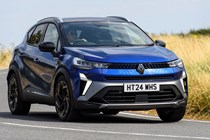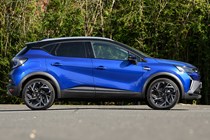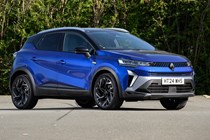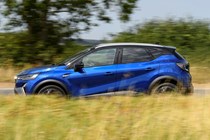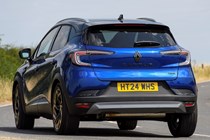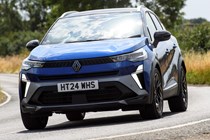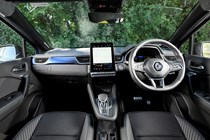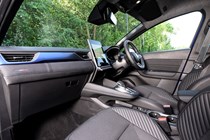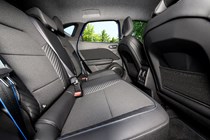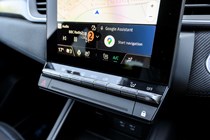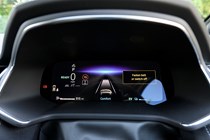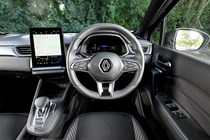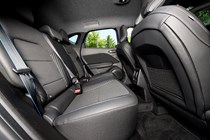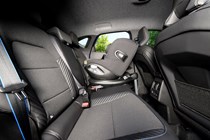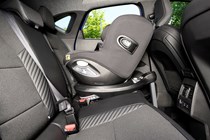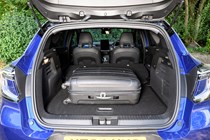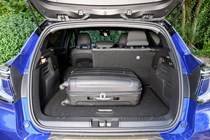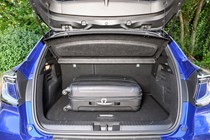
Renault Captur engines, drive and performance
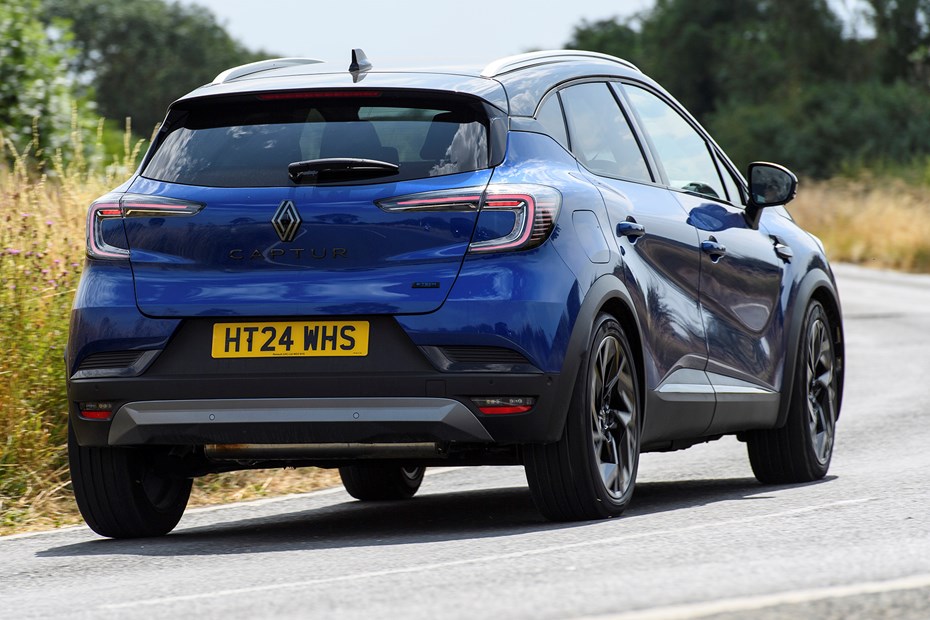
- Only one petrol and one hybrid available
- TCe 90 seems underpowered
- Hybrid model is a good all-rounder but much more expensive
Renault has drastically cut the number of engines available on the Captur in recent times, with now just one small petrol engine available and one ‘self-charging’ hybrid – mirroring what you can have on the Clio hatchback. Previously you could get more powerful turbocharged engines with the Captur and a plug-in hybrid, but these have now been discontinued.
Petrol engines
The sole petrol engine now available on the Captur is the TCe 90, which is a small 90hp 1.0-litre turbocharged petrol engine paired exclusively (at the time of writing) to a six-speed manual gearbox, though Renault indicated that an automatic version could follow.
Though we’re yet to try a new Captur with this engine, on paper at least, it seems that the engine is perhaps just a bit too small for a car of this size – 0-62mph taking 14.3 seconds, which is rather slow by modern car standards. Despite this, it’s still expected to make up for the bulk of sales.
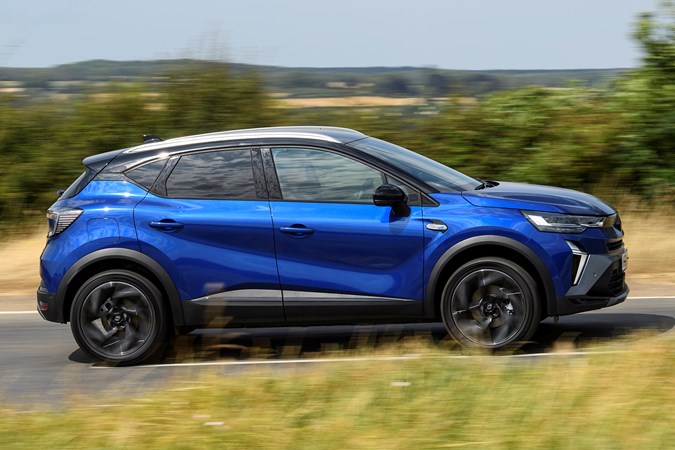
Hybrids
Though Renault might have dropped a plug-in hybrid, a regular oelf-charging setup remains available. Called E-Tech 145, it’s a setup available in a variety of different Renaults – and models from sibling brand Dacia.
This combines a 1.6-litre petrol engine with a couple of electric motors and a small battery pack. It’s a surprisingly pleasant combination in the Captur, with smoother transitions and less obvious ‘hunting’ for gears than the similar setup in the Clio E-Tech. It’s largely quite smooth and refined, but can be unpleasantly noisy under harsh acceleration and when going uphill.
The complexity of the gearbox, which has a range of different modes, can also make it seem less responsive than it is. It’s by no means fast, but a 10.6-second 0-62mph time is more than respectable for a car like this. The hybrid is the pick of the two engines, though is considerably more expensive at £3,500 more than the petrol, though will likely have much better residual values.

What’s it like to drive?
- Decent blend of ride and handling
- Comfort suffers slightly on larger wheels
- Light and easy to drive
Like its smaller Clio sibling, the Captur has evolved into a very pleasant and competent car to drive. There’s a pleasing level of body control and the car doesn’t roll around too much in the corners or feel wayward on the motorway. It’s backed up by steering which is accurate and direct, if a little over-assisted. Switching into Sport mode – available on higher-spec cars fitted with something known as My Sense – weights the steering up, but this feels rather artificial.
There’s lots of grip, too, resulting in a planted feeling in faster corners. While the Captur doesn’t have quite the same sporting feel in the corners as a Ford Puma, it’s nonetheless very solid-feeling and a big improvement over the Nissan Juke.
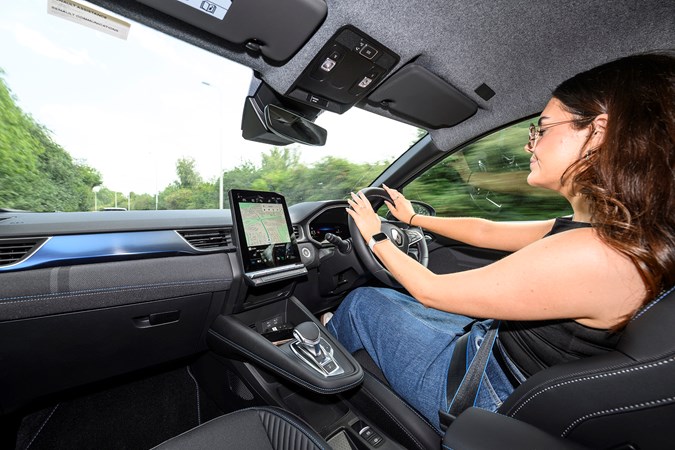
The Captur is two-wheel-drive only; like most crossovers, four-wheel-drive isn’t even an option, because the vast majority of buyers don’t want or need it. That means you certainly won’t be tackling anything more taxing than a slightly muddy lane with this car, though the additional ground clearance that the SUV body style offers does mean it copes well with the speed bumps and potholes of the urban jungle.
The ride is best on cars fitted with the smaller 17- and 18-inch alloy wheels as top-spec Esprit Alpine versions fitted with new 19-inch alloy wheels (Renault boasts of having some of the largest alloy wheels in its class) are not so comfortable, and likely won’t be well-suited to the UK’s crumbling roads.


